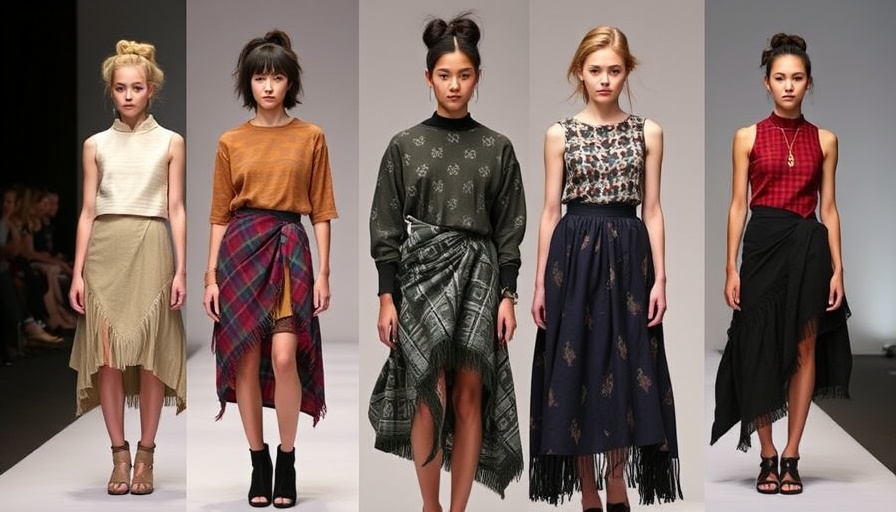
Bridging Cultures with Fashion: The Innovative Kilt-Sarong Fusion
The recent unveiling of a fashion collection, which combines the Scottish kilt with the Malaysian sarong, marks a remarkable exploration of cultural convergence. New designers, driven by the influences of their diverse heritages, are redefining not just aesthetics in fashion but also the narratives woven into the fabric. This collection is not just about style—it speaks volumes about identity and creative expression.
Why This Fashion Fusion Matters
In a world increasingly characterized by globalization and the blending of cultural heritages, fashion serves as a powerful medium for discussing identity. Designers aim to create pieces that resonate with people from various backgrounds, reflecting shared experiences while honoring distinct traditions. By merging the kilt and sarong—symbolic attire of Scottish and Malaysian cultures, respectively—designers are crafting an innovative dialogue within their creations.
The Emotional Impact of Cultural Fashion
Such innovative fusions in fashion evoke deep emotional responses. Those familiar with kilts may associate them with tradition, rituals, and family heritage, while sarongs may conjure images of relaxed beach days or vibrant celebrations. Combining these garments allows wearers to share and celebrate their backgrounds while exploring the narratives of others. In essence, it builds a community rooted in appreciation and understanding.
Making Remote Work Spaces Comfortable with Culture
On the topic of cultural influence, digital nomads, who often work remotely, can draw inspiration from diverse cultural motifs when creating their workspaces. The inclusion of culturally-infused items, like a kilt-patterned cushion or a sarong-inspired desk throw, can enhance the workspace, making it comfortable and also visually rich. Ergonomically designed furniture that reflects various cultures can not only provide physical support but also inspire creativity and productivity in a remote work environment.
Practical Tips for Ergonomic, Culturally-Inspired Workspaces
For those looking to implement these ideas into their home offices, consider these practical tips:
- Use Color Schemes: Find colors in traditional fabrics that resonate with you and decorate your workspace to create a vibrant environment.
- Incorporate Textiles: Use sarongs or plaid from kilts as decorative throws or chair covers to add a cultural touch while being comfortable.
- Personal Artifacts: Incorporate artwork or items that symbolize your heritage to create a nurturing workspace that feels personal and inspirational.
Future Trends in Fashion and Workspaces
Considering trends in both fashion and remote workspaces can leave much to speculation. With the rising emphasis on diversity and inclusivity, expect to see more items that reflect multicultural perspectives in both fashion designs and workspace construction. The demand for functional yet visually appealing environments will lead to the creation of innovative furniture that combines aesthetics with ergonomic principles, catering to a global audience.
Conclusion: The Call to Embrace Diversity in Your Workspace
The intersection of fashion and workspaces isn't merely about comfort—it's about creating spaces that tell a story and reflect one's heritage. As a digital nomad, it's worthwhile to curate your environment to foster creativity and productivity by embracing different cultures through design. Invest in items that inspire you, reflect diversity, and make your workspace uniquely yours. Explore cultural influences in fashion, and let them guide your next workspace transformation. Feel free to share your experiences and what works for you in cultivating an inspiring work environment.
 Add Row
Add Row  Add
Add 




Write A Comment